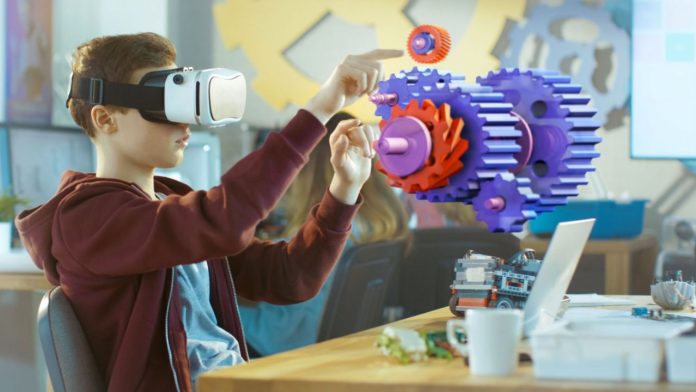In the ever-evolving landscape of educational technology, Augmented Reality (AR) smart glasses are emerging as transformative tools, bringing a new dimension to learning experiences across various academic levels. From K-12 classrooms to higher education institutions, educators are exploring the potential of AR smart glasses to create immersive and engaging learning environments that go beyond traditional teaching methods. This article delves into the application of AR smart glasses in education, highlighting their potential benefits and discussing the challenges educators and institutions may face in adopting this innovative technology.
AR Smart Glasses in K-12 Classrooms:
In K-12 classrooms, augmented reality smart glasses open up exciting possibilities for interactive and immersive learning. Imagine students putting on AR glasses to explore historical events as if they were present, dissecting virtual organisms in biology class, or conducting chemistry experiments in a simulated environment. The hands-on, visual nature of AR smart glasses can revolutionize how students engage with educational content, making learning more interactive, enjoyable, and effective.
Immersive Learning in Higher Education:
Moving into higher education, AR smart glasses continue to play a pivotal role in providing immersive learning experiences. Whether it’s engineering students visualizing complex 3D models, medical students exploring virtual anatomy, or architecture students interacting with virtual prototypes, AR glasses enhance the depth and breadth of educational content. This technology not only facilitates a better understanding of subjects but also prepares students for real-world applications of their knowledge.
Aiding Subjects Across the Curriculum:
AR smart glasses offer versatility in supporting a wide range of subjects. In science classes, students can witness scientific concepts come to life through virtual simulations, providing a deeper understanding of complex theories. In history classes, they can virtually travel to historical landmarks and events, gaining a firsthand perspective on the past. Moreover, AR glasses can aid in hands-on skill development, such as learning a new language, by providing immersive experiences that enhance language acquisition through real-world applications.
Challenges and Considerations for Educators:
While the potential benefits of integrating AR smart glasses into education are promising, educators and institutions must navigate certain challenges. Cost considerations, the need for specialized training for teachers, and ensuring that the technology aligns with educational goals are some factors that require careful consideration. Additionally, concerns related to potential distractions, the learning curve for students, and privacy issues may arise and need to be addressed.
Educational Equity and Access:
Another consideration is the potential disparity in access to AR smart glasses among students. Ensuring that all students have equal opportunities to benefit from this technology is crucial for maintaining educational equity. Institutions must explore avenues for providing access to AR glasses, whether through subsidies, partnerships, or other means, to prevent creating educational disparities.
Conclusion:
The integration of AR smart glasses in education represents a new dimension of learning, offering immersive experiences that have the potential to revolutionize the way students engage with educational content. From K-12 classrooms to higher education institutions, the applications are diverse and promising. While challenges exist, the continuous evolution of this technology and thoughtful implementation can pave the way for an educational landscape where AR smart glasses enhance the learning journey, making education not just informative but truly transformative.














